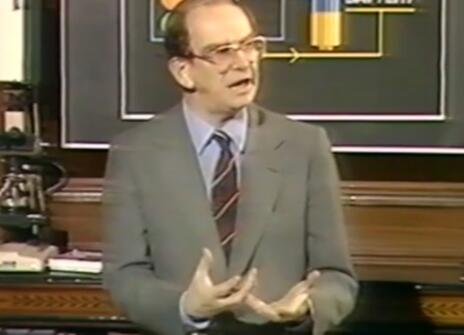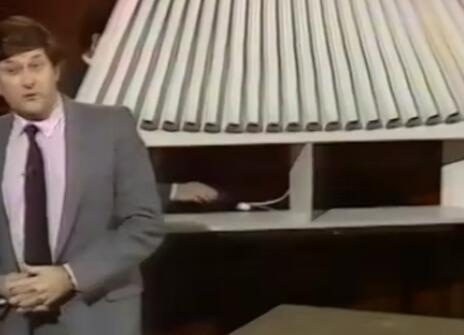Lecture 5 – Applications of lasers
From the lecture programme:
Pulsed lasers possess the required attributes to enable us to follow the course of chemical events that take place in less than a millionth of a millionth of a second. Moreover, because of its high purity of colour, laser light can be exploited chemically, and medically, selectively to excite atoms that are single isotopes in complex mixtures. This is the basis of powerful methods of separation. The scattering of laser light can also be turned to advantage in measuring the size of molecular entities. Intense pencils of laser light can be used remotely to sense pollutants in the atmosphere. The coherence of laser light gives rise to holography and a display of holograms of widely different types will be presented.
Lasers are used in telecommunications, and we will show the passage of laser light down an exceptionally long fibre without loss of intensity. Advantage is taken of such fibre optics to sense pressure and temperature changes, and to make a laser gyroscope of potential value in inertial navigation.
Lasers, it has to be recognised, also have military applications, and some of these will be outlined.
About the 1987 CHRISTMAS LECTURES
From the 1987 lecture programme:
"Crystals first appeared on earth many millions of years before the emergence of life. The first laser, however, based on a man-made crystal of ruby, was fashioned less than thirty years ago. Nowadays, crystals and lasers play crucial roles in the design of new materials, in the expanding world of communications, in medicine and environmental science and in the quest for better, cleaner forms of energy. They also function as the picot for a wide range of fundamental scientific studies."
In this series of six CHRISTMAS LECTURES, Professors John Meurig Thomas and David Phillips explore the science and applications of crystals and lasers, reviving some of the key experiments from the history and evolution of physical sciences and exploring what the future might bring.




